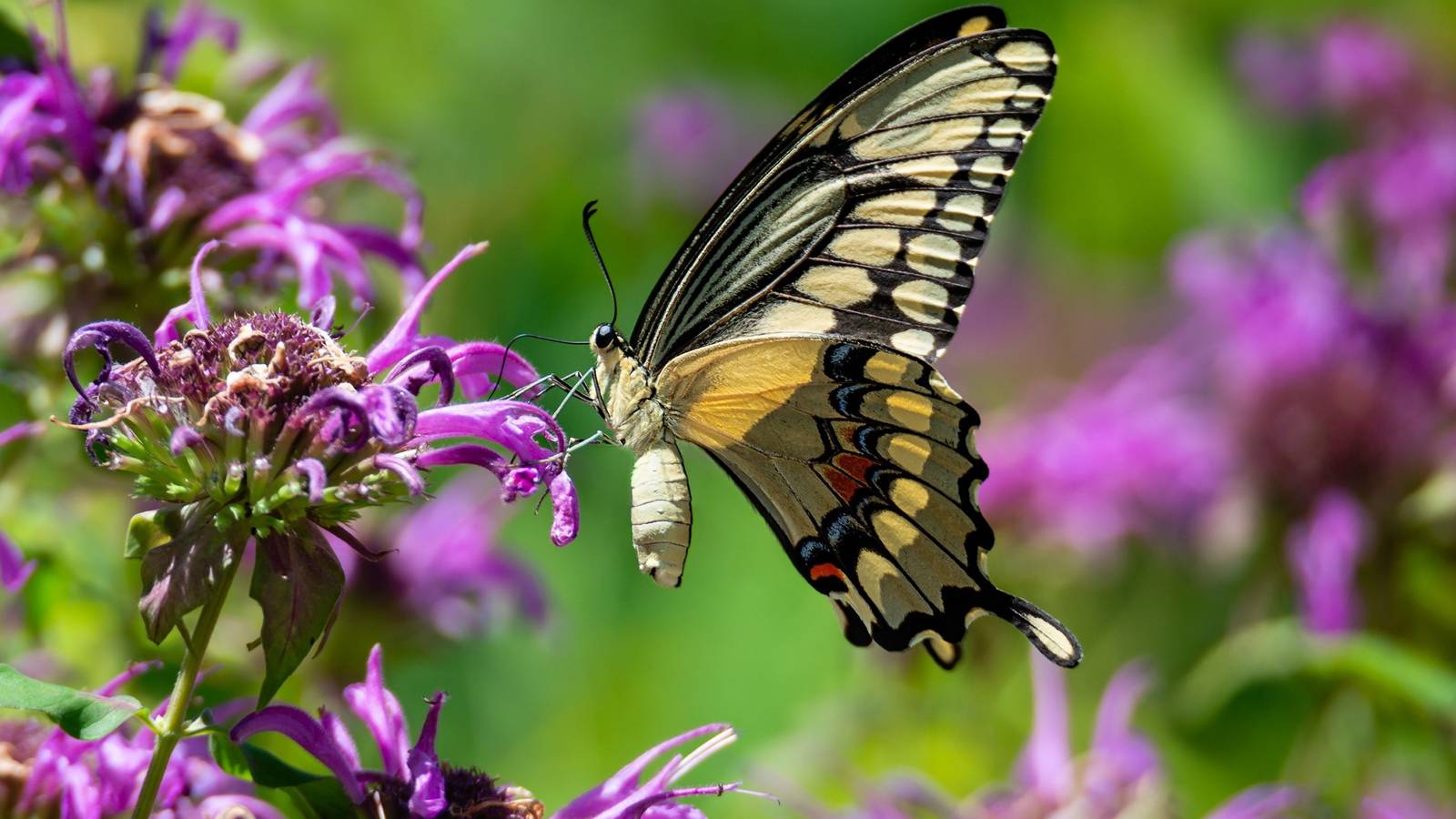If you want to create a vibrant butterfly garden in Florida, choosing the right plants is key. The Sunshine State’s warm climate offers a perfect playground for butterflies, but not all plants will thrive or attract these delicate visitors.
You might be wondering which flowers will bring the most color and flutter to your outdoor space. The good news? There are several beautiful, easy-to-grow plants that butterflies love and that suit Florida’s unique environment. By picking the best plants, you’ll not only enjoy a lively garden but also support local butterfly populations.
Keep reading to discover the top plants that will transform your garden into a butterfly paradise!

Credit: espositogardencenter.com
Native Florida Plants
Native Florida plants form the heart of a successful butterfly garden. They provide essential food and shelter to local butterfly species. Choosing native plants supports the natural ecosystem. These plants are adapted to Florida’s climate and soil. They require less water and care, making your garden sustainable and vibrant.
Butterflies are drawn to native plants for nectar and as host plants for their larvae. Planting native species increases butterfly visits and helps maintain their populations. Here are some excellent native Florida plants for butterfly gardens.
Milkweed For Monarchs
Milkweed is vital for monarch butterflies. Monarch caterpillars feed exclusively on milkweed leaves. Without milkweed, monarchs cannot complete their life cycle. Florida native milkweed varieties, like Tropical milkweed, thrive in warm climates. These plants produce clusters of sweet-smelling flowers that attract adult monarchs. Milkweed also supports other pollinators. Plant milkweed in sunny spots with well-drained soil.
Passionflower Varieties
Passionflower vines provide food and shelter to various butterfly species. Florida native passionflowers, such as Maypop, serve as host plants for zebra longwing and gulf fritillary butterflies. Their intricate flowers attract many pollinators. These vines grow well on trellises or fences, adding vertical interest to your garden. Passionflowers prefer full sun to partial shade and moist soil. They bloom from spring through fall, offering a long nectar source.
Blue Porterweed Benefits
Blue porterweed is a Florida native shrub loved by butterflies. It produces small, tubular blue flowers rich in nectar. Butterflies like tropical buckeye and swallowtails visit porterweed often. This plant blooms almost year-round in Florida’s climate. Blue porterweed tolerates heat and dry conditions once established. It grows best in full sun and well-drained soil. Its long blooming season makes it a reliable nectar source for many butterflies.
Nectar-rich Flowers
Nectar-rich flowers are essential for a thriving butterfly garden in Florida. These plants provide the energy butterflies need to fly and reproduce. Bright colors and sweet scents attract many butterfly species. Choosing native and well-adapted plants helps ensure continuous blooms. These flowers also support other pollinators, creating a lively garden environment.
Lantana Colors And Care
Lantanas come in vibrant shades of yellow, orange, pink, and red. Their clustered blooms offer abundant nectar for butterflies. This plant thrives in Florida’s warm climate and full sun. Lantanas are drought-tolerant once established. Prune regularly to encourage new flowers. Watch for pests like whiteflies and treat early. They bloom from spring to fall, providing a long nectar source.
Salvia Species
Salvias attract butterflies with their tubular flowers. Colors range from deep purple to bright red and blue. They prefer full sun and well-drained soil. Salvia plants are low maintenance and drought-resistant. Deadheading spent flowers promotes longer blooming. Many salvia species bloom all year in Florida. Their nectar-rich flowers support a wide variety of butterfly species.
Coreopsis And Blanketflower
Coreopsis and Blanketflower offer bright yellow and orange blossoms. These flowers bloom throughout Florida’s warm seasons. Both plants grow well in full sun and sandy soil. They require little water once established. Their open flower shapes make nectar easily accessible. These hardy plants attract butterflies and other pollinators. They add cheerful color and constant nectar to the garden.
Host Plants For Caterpillars
Caterpillars need specific plants to grow and turn into butterflies. These plants are called host plants. They provide food and shelter for caterpillars in your garden. Choosing the right host plants helps support butterfly life cycles. It also attracts more butterflies to your garden in Florida.
Pawpaw Trees
Pawpaw trees are important host plants for the Zebra Swallowtail butterfly. Their large leaves are perfect for caterpillars to feed on. Pawpaw trees grow well in Florida’s climate. They also add beauty and shade to your garden. Planting pawpaw trees helps butterfly populations thrive.
Wild Indigo
Wild indigo is a native plant that supports the Indigo Duskywing butterfly. Caterpillars rely on wild indigo leaves for food. This plant is hardy and grows easily in Florida gardens. It blooms lovely purple flowers that attract adult butterflies too. Including wild indigo increases your garden’s butterfly visitors.
Hackberry Shrubs
Hackberry shrubs serve as host plants for the Hackberry Emperor butterfly. Their leaves provide essential nutrition to caterpillars. These shrubs are common in Florida and adapt well to garden settings. Hackberry shrubs also offer shelter for many butterfly species. They are a valuable addition to any butterfly garden.
Butterfly Bush In Florida
The butterfly bush is a popular choice for Florida gardens. It produces vibrant flowers that attract many butterfly species. The plant adapts well to Florida’s warm climate. Gardeners appreciate its long blooming period and fragrant blooms. Yet, it has unique challenges in this region. Understanding these helps to grow it successfully.
Pros And Cons
Butterfly bush offers bright, colorful flowers that butterflies love. It blooms from summer through fall, providing nectar for many species. The plant grows quickly and can fill garden spaces fast. It is drought tolerant once established, needing less water over time.
On the downside, butterfly bush can get diseases like rust and mites in Florida. It is also prone to root nematodes, which can weaken the plant. Some cultivars may not live long here, often lasting just a few years. It can become invasive if not managed properly.
Container Growing Tips
Growing butterfly bush in containers helps control its spread and health. Choose a large pot with good drainage holes to avoid waterlogging. Use high-quality potting mix for nutrient support. Place the container in a sunny spot for at least six hours daily.
Water the plant regularly, keeping the soil moist but not soggy. Fertilize every 4-6 weeks with a balanced fertilizer. Prune spent flowers to encourage new blooms. Container growing also makes it easier to treat pests and diseases early.
Planting Timing And Care
Plant butterfly bush in Florida in early spring after the last frost. This timing allows the roots to establish before the heat arrives. Spring planting encourages strong growth and a longer blooming season. Fall planting is possible but should be done well before frost.
Choose a sunny location with well-drained soil. Water deeply after planting and keep the soil moist during the first season. Apply mulch to retain moisture and reduce weeds. Prune the bush in late winter to shape and remove old growth. Regular care ensures a healthy, vibrant butterfly bush.
Planting Tips For Florida Gardens
Planting a butterfly garden in Florida requires special care to help plants thrive. Proper planting increases blooms and attracts more butterflies. Understanding local climate and soil is essential for success. Follow these simple tips to enjoy a healthy, colorful garden all year.
Spring Vs Fall Planting
Spring planting gives plants a long growing season. They develop strong roots before summer heat arrives. Butterflies find more flowers to feed on during spring and summer.
Fall planting works well in mild Florida areas. Plants settle in cooler weather and grow roots deeply. This helps them survive dry or hot spells later. Plant before the first frost to allow root growth.
Watering And Mulching
New plants need regular watering to keep soil moist. Water deeply but avoid puddles to prevent root rot. Early morning watering reduces evaporation and helps plants absorb water better.
Mulch keeps soil cool and retains moisture. Use organic mulch like pine bark or leaves. Mulching also controls weeds that compete for water and nutrients.
Avoiding Common Mistakes
Avoid planting butterfly bushes directly in the ground. They attract pests and diseases in Florida soil. Use containers or raised beds for better control.
Do not overwater; soggy soil harms roots. Check soil moisture before watering again. Avoid planting in full shade; butterflies prefer sunny spots with some protection.
Choose native plants suited to Florida’s climate. Non-native plants may struggle and need more care. Native plants provide better food and shelter for butterflies.

Credit: acookandherbooks.com
Designing A Butterfly-friendly Space
Creating a butterfly-friendly garden in Florida means more than just planting flowers. It requires thoughtful design to meet butterflies’ needs. The space should offer sunlight, shelter, and a variety of plants. These factors help attract and support many butterfly species all year.
Sunlight And Shelter
Butterflies need sunlight to warm their wings and fly. Choose a garden spot with at least six hours of direct sun daily. Avoid heavy shade or windy areas. Provide shelter with shrubs or small trees. These protect butterflies from strong winds and rain. A calm, sunny area encourages butterflies to stay and feed.
Plant Grouping Strategies
Plant flowers in groups to make nectar sources easy to find. Grouping also creates visual appeal that attracts butterflies. Use clusters of the same species or mix different plants with similar colors. Tall plants at the back and shorter ones in front create layers. This structure helps butterflies land and move safely.
Seasonal Bloom Planning
Plan your garden to bloom throughout the year. Select plants that flower in different seasons. This ensures a steady supply of nectar for butterflies. Include native Florida plants known to bloom in spring, summer, and fall. Constant blooms keep butterflies visiting and support their life cycle.

Credit: www.backyardboss.net
Frequently Asked Questions
What Is The Best Plant For A Butterfly Garden In Florida?
Blue porterweed (Stachytarpheta jamaicensis) is the best plant for Florida butterfly gardens. It attracts and supports many butterfly species.
What Are Common Butterfly Garden Mistakes?
Common butterfly garden mistakes include planting non-native species, lacking host plants, overusing pesticides, poor watering, and ignoring sunlight needs.
Can Butterfly Bushes Be Planted In Fl?
Butterfly bushes can grow in Florida but often face rust, mites, and nematode issues. Container planting improves success.
What Month Is Best To Plant A Butterfly Bush?
Plant butterfly bushes in spring after the last frost for strong root growth and early blooms. Fall planting works if done before the first frost, especially in mild climates. Water regularly and mulch to protect roots and retain moisture.
Conclusion
Creating a butterfly garden in Florida brings joy and beauty to any space. Choosing the right plants helps attract many butterfly species. Native plants like blue porterweed provide food and shelter for caterpillars and butterflies. Planting a mix of nectar and host plants ensures butterflies visit often.
Water and care for your garden regularly to keep it healthy. Watch your garden come alive with colorful wings fluttering around. Enjoy the peaceful moments as butterflies brighten your outdoor space. Start planting today and help support Florida’s butterfly population.

